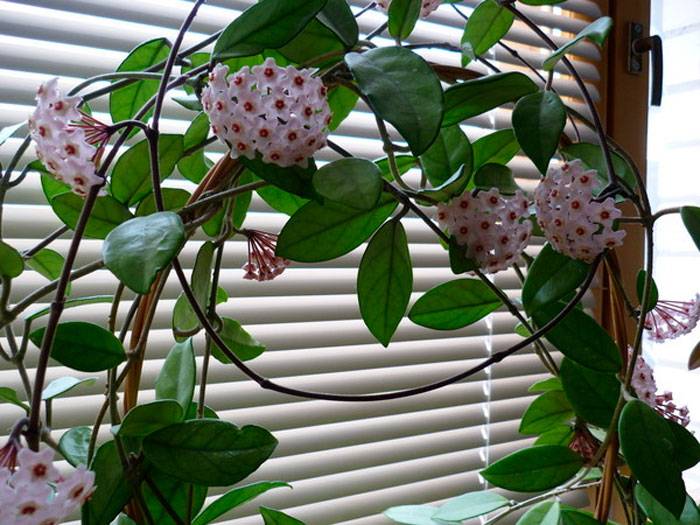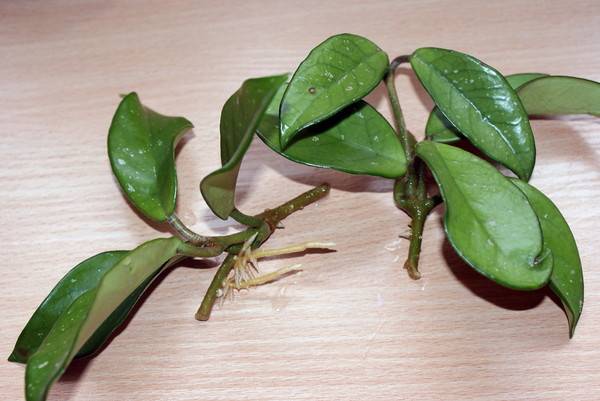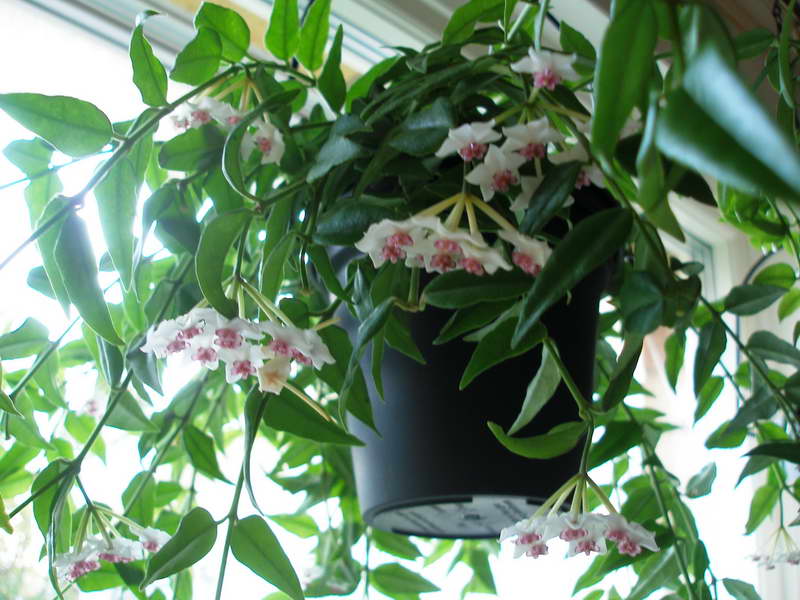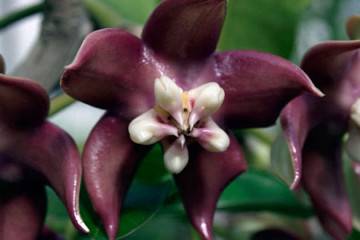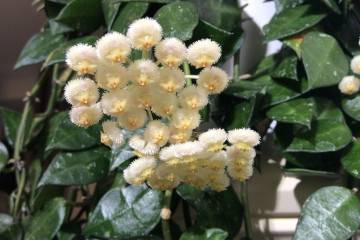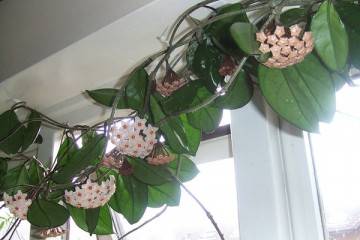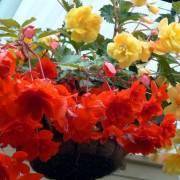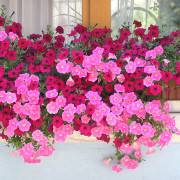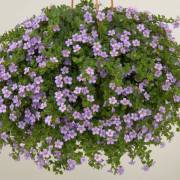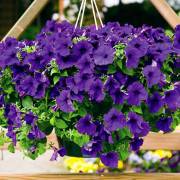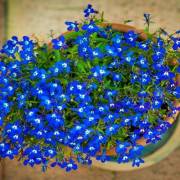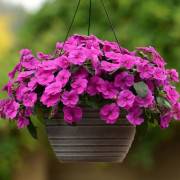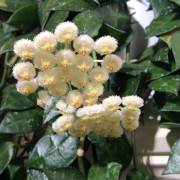How hoya or indoor wax ivy blooms
Content:
Wax ivy or hoya is an evergreen representative of the tropics. Long shoots are adorned with dense green glossy leaves and unusual flowers with a wonderful aroma. Because of the waxy coating, the plant is called waxy ivy. The beauty and simplicity of breeding make it a popular indoor plant.
Wax ivy or hoya
Hoya is a representative of the Kutrov family, the Lastovnev subfamily. Shrub and liana-like varieties are found in this family. In their natural environment, they grow in the tropical forests of Australia and East Asia. Botanist Brown R. described the plant at the beginning of the 19th century and gave it a name. He named the flower after the gardener Hoya T. The latter was very fond of cultivating tropical plants.
In the homeland, the flower grows, leaning on trees, rocks. The length of the creeping stems reaches 10 m.
The evergreen plant entered the European part at the end of the 18th century. True, only as a houseplant. In the beginning it was used to decorate greenhouses, winter gardens. A little later, ivy began to be planted in houses, apartments.
Houseplant hoya
Hoya refers to shrub or creeping perennials. Long stems are elastic and resilient. All varieties have one thing in common - the regrown top remains bare for a long time, without leaves. Its color is dark lilac, closer to lilac.
After a few weeks, the regrown part begins to turn green. At the same time, leaves appear on it. The leaf plate is attached to the shoot on short petioles. Its shape is oval. The size of a fully formed leaf is 5-8 cm long and 4-5 cm wide. Young leaves have a glossy surface, while mature ones become dull (waxy). The lower part of the shoots grows stiff with age.
Popular hoya varieties
About 50 species of this ivy have been studied, but few have found recognition as a house plant. Of the often cultivated, it can be noted:
- Fleshy waxy hoya. Prefers vertical supports. On them, the variety grows six-meter stems. The leaves are very fleshy, dense green in color. Peduncles form umbrellas of 10-15 buds. The petals are pink, but often snow-white. In shape, the blossoming bud resembles a star. The crown is ruby red. It begins to bloom from the end of May. With two to three repetitions, flowering continues until early November. The species has several interesting varieties (variegated, minibel, tricolor, compact), which differ in the color of the buds, the size of the leaves and buds.
- Lovely hoya. Dense bush. Flexible shoots need support. It is distinguished by the appearance of light green foliage and the shape of the petals of the bud. In a beautiful hoya, they bend inward. Inflorescences of white, pink or cream flowers are collected in an umbellate inflorescence. The crown is much darker than the base color of the petals.
- Multi-flowered hoya. It is a vine with thick, flexible stems. They are densely planted with dark green leaves, umbellate inflorescences. One of them has about 15 buds.The petals of the bud are bent outward (like a tulip), instead of a crown, there is a modified anther, similar to spurs. Petals are white, yellow, cream.
- Hoya variety Lacunosa. This is the earliest variety. The leaves, similar to diamonds, are rather small, dense green. The buds are collected in a spherical inflorescence. Petals of small flowers are covered with fine hairs, curved inward. The fused anthers are dark cream, and the petals are white or yellow.
- Hoya Kerry. Waterfall liana. The leaves are shaped like a heart. Umbellate inflorescences. Each umbrella consists of 20-25 beige buds. Pink-red crowns are rich in nectar.
- Hoya Calistafilla. Large leaves grow on long, thin stems of this species. The size of the leaf plate reaches 17 cm in length and 7 cm in width. Inflorescences consist of voluminous brown-yellow flowers. Calistaphylla anthers differ from other varieties. They are pure white.
- Hoya Cumingiata. The stems of the plant are resilient, not thin. They are pubescent with bright green oval leaves. Yellow buds, dark purple crown.
- Hoya Pentaflebia. This vine is distinguished by its peculiar leaves. They are long (up to 15 cm in length), divided by five very noticeable veins. Umbrellas of the inflorescence consist of many (up to 50 pcs.) Lemon flowers, with a white crown.
- Hoya Gracilis. A plant with long, flexible branches. Flowers and leaves are small. A pink bud with a dark purple crown is only 1 cm in diameter. The inflorescence looks like a flat umbrella.
- Hoya Publicis. Fast growing vine. Small leaves grow on elastic stems. Star-shaped buds and a crown of one, pink color, collected in inflorescences, similar to hemispheres.
- Hoya Macrophylla. This vine has medium-length shoots, fleshy. A distinctive feature is the variegated color of the leaf plate. Balls-inflorescences consist of a large number of pearl-pink buds. The crown of the flower is purple-red.
- Hoya Mindorenzis. This variety has long, glossy leaves. Very small, densely creamy flowers are collected in spherical inflorescences. Accumulated wine-colored anthers.
Reproduction of culture
You can grow new plants by cuttings and layering.
The tops of the stems are cut as planting material. Cutting length 10-12 cm. Leaves do not need to be removed. For better root formation, the lower part of the cutting is processed by Kornevin (Epin) and placed in a container with water. When roots appear, it must be planted in a soil mixture (sand + peat) and covered with foil. At a temperature of about + 20-22 degrees, the plant will firmly take root in a couple of weeks and the film should be removed. Then you need to take care of it like an adult plant.
Reproduction is possible by air roots. This is a ready-made plant. It can be detached and planted in a separate pot.
It is very convenient to get a new flower by rooting the cuttings.
Useful properties of ivy
Culture also has beneficial properties. It is used for purulent diseases (acne, boils) and to relieve headaches.
How wax ivy blooms
Hoya wax ivy blooms in waves from early summer to November. The peduncle grows out of the leaf sinus. There are no leaves on it. The buds are collected in umbellate or spherical inflorescences. They retain their original appearance for more than 20 days. The number of flowers in an inflorescence depends on the variety of the culture, but not more than 50 pcs. The flowers themselves are bisexual.
The bud consists of five ovoid petals. The highlight of the flower is the crown of accrete anthers. It stands out well above the thicket of petals. The color of the crown is darker. The velvety petals of the flower itself are:
- white;
- milk cream;
- dark lilac;
- light green;
- purple;
- red (and all shades).
Also, depending on the variety, the size of the buds also varies. There are very small - 10 mm and large (for example, Imperial) - almost 1 cm.
In nature, the culture is considered a good honey plant. During the entire flowering period, a small drop of nectar collects and thickens inside the bud.Therefore, it has a scent that is attractive to insects.
Hoya: is it possible to keep at home
Hoya flower: why not grow at home? This question has been worrying the minds of people for many decades. Meanwhile, wax ivy is a completely harmless plant. All negative statements about him are associated with human prejudice. It's just that sometimes it's easier to blame someone or something for your trouble than to delve into yourself and find the reason. Although, for suggestible people, getting rid of the flower can be a positive shift on the mental level.
Myth or truth that wax ivy brings bad luck
The weather in the house does not in any way depend on this or that plant. There will be as many positive reviews as negative ones. With regard to wax ivy, the opinion has been fueled for centuries that it drives people out of the house. This generally applies to all creepers. Supposedly, as the stem crawls, the loved one will leave. Especially for men. They call him “muzhegon”. Although, at all times, men have left and left many families. A flower is hardly capable of preventing misfortune.
An exception may be a complete rejection of the smell of a flower by the head of the family and the hostess's unwillingness to get rid of it. This is hardly possible.
It is also a myth that girls who have hoyu at home will never get married. Moreover, there are many happy brides and wives among the owners of a wonderful flower. Disease and misfortune are also not associated with this ivy.
Thus, happy people continue to grow wax ivy in their home, and unhappy people ruthlessly deal with it in an attempt to ward off trouble.
White and black stripes in the life of every person are approximately the same. Regardless of any home flower, they will alternate. Superstition has nothing to do with it.
Opinion: why wax ivy cannot be grown at home
As for the hoya, whether it is possible to keep a flower at home or not, everyone decides for himself. It is a liana-like culture, and it has long been believed that climbing plants are energy vampires. They supposedly deprive a person of vital energy. They tried not to grow them inside the living quarters.
To protect ourselves from outside vampirism, our ancestors planted some loaches near the gate. It could be:
- girlish grapes;
- ivy;
- hops, etc.
It is wrong to call wax ivy a vampire. It grows solely from its roots. This also proves the comfort of being close to the plant. So the hoya flower can be kept at home. He will not bring trouble.
Hoya is poisonous or not
The long-term neighborhood with this flower has proven its safety. Contrary to popular belief about the poisonousness of some ivy, wax does not apply to them. Directed research has also been carried out on the question of “hoya is poisonous or not”. Scientists have not found a poisonous discharge from any part of the plant. Strong aroma can be harmful. People prone to allergies and odors may be at risk. If there are such in the family, then it is better to refrain from acquiring a flower.
In rare cases, touching the buds can cause dermatitis. The thick scent can be haunting if the house flower is in a small room.
In large rooms, culture is aesthetically pleasing and enchanting.
For many, wax ivy is the flower of family happiness. Every day to see a flowering plant, to inhale its aroma is already good. Moreover, there is nothing difficult in its cultivation and care.It is important that ivy perfectly coexists with any indoor plants and, according to esotericists, is able to suppress the aggression of toxic people.
